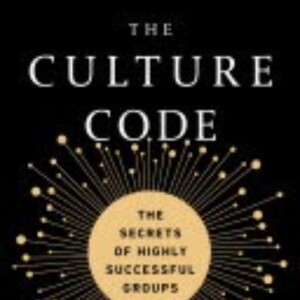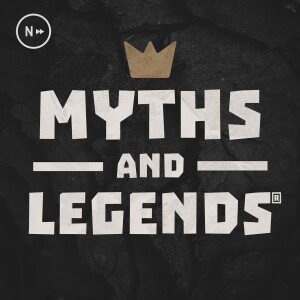

"The Culture Code: The Secrets of Highly Successful Groups" is authored by Daniel Coyle, who is a renowned journalist and writer focusing on talent development, education, and organizational dynamics. His previous works include "The Talent Code" and "The Little Book of Talent," which delve into the psychology of skill acquisition and the formation of talent.
Author's Background:
Coyle's background in journalism and his studies in human performance contribute significantly to his insights in "The Culture Code." He has traveled extensively to various organizations and teams, examining what creates high-performing groups. Coyle’s approach combines elements of science, anecdotes, and practical insights, drawing from his interviews with experts and experiences with successful groups ranging from sports teams to businesses to educational settings.
Book's Context:
Published in 2018, "The Culture Code" explores the concept of culture within organizations and groups, focusing on how culture is formed and maintained. Coyle identifies three essential skills that contribute to creating a strong culture: building safety, sharing vulnerability, and establishing purpose. These themes draw from psychological and sociological research and are illustrated with real-world examples from successful teams, such as the San Antonio Spurs and the U.S. Navy SEALs.
In the context of an increasingly interconnected and often remote working world, "The Culture Code" addresses the challenges organizations face in fostering collaboration, trust, and engagement. It is particularly relevant in discussions surrounding leadership, team dynamics, and organizational behavior, especially in light of changing workplace practices and increasing interest in employee well-being and motivation.
Overall, Coyle emphasizes that an organization's culture isn’t just a backdrop; it is a crucial component that shapes performance and cohesion. His insights offer valuable strategies for leaders and team members interested in fostering a positive and productive environment.
Chapter 2 Analysis of main characters and plot"The Culture Code" by Daniel Coyle is not a narrative-driven book with characters and a plot in the traditional sense; instead, it presents a series of insights and frameworks regarding how successful groups and organizations create strong cultures. Here are the key themes and concepts in a simplified way:
Key Concepts:
- Safety: Coyle emphasizes the importance of creating a safe environment where individuals feel secure and valued. This safety encourages open communication and risk-taking.
- Vulnerability: The book highlights how vulnerability fosters trust and connection among team members. When leaders show vulnerability, it promotes a culture of openness.
- Purpose: A strong sense of purpose unites group members. Coyle discusses how organizations clarify and communicate their mission effectively to inspire commitment and motivation.
Main Ideas:
- Belonging Cues: These are signals that indicate to individuals they are part of the group and valued. They can be verbal affirmations, physical gestures, or inclusive actions.
- Establishing a Culture: Successful organizations often have specific practices in place that reinforce their culture, such as rituals, storytelling, and feedback mechanisms.
- Leadership Role: Leaders play a crucial role by setting the tone for culture, modeling behaviors they wish to see, and nurturing the emotional climate of the group.
Development:
Throughout the book, Coyle draws on examples from various successful organizations and teams, illustrating how these principles translate into real-world applications. He uses case studies from different industries, including sports, education, and business, to demonstrate how cultivating a positive culture leads to higher performance, innovation, and satisfaction among group members.
In summary, "The Culture Code" provides readers with a framework for understanding the foundational elements of effective group cultures, focusing on safety, vulnerability, and purpose. These principles encourage connection and productivity within teams, ultimately guiding the development of strong organizational cultures.
Chapter 3 Theme Exploration and Analysis"The Culture Code: The Secrets of Highly Successful Groups" by Daniel Coyle explores the dynamics that contribute to the success and cohesion of various groups and organizations. Here are some specific themes and topics that Coyle delves into:
- Safety: Creating a Climate of Belonging
- Psychological Safety: Coyle emphasizes the importance of creating an environment where group members feel safe to express their thoughts and ideas without fear of repercussion. This safety is essential for fostering open communication and innovation.
- Belonging Cues: The book discusses behaviors and signals that leaders can use to reinforce a sense of belonging within the group, such as inclusive language and regular check-ins that reinforce connection.
- Vulnerability: Building Trust
- Shared Vulnerability: Coyle presents the idea that successful groups embrace vulnerability as a means of building trust. When leaders and team members share their uncertainties and challenges, it fosters deeper connections among members.
- Feedback Mechanisms: The theme of constructive, honest feedback is highlighted as a crucial element in promoting a culture where vulnerabilities are accepted and addressed collectively.
- Purpose: Instilling Meaning and Direction
- Common Goals: Successful groups have a clear sense of purpose that aligns their efforts. Coyle emphasizes the importance of having a shared vision or mission that provides direction and motivation for all members.
- Cultural Symbols: The use of stories, rituals, and symbols to communicate the group’s purpose and values is explored, showing how these elements can reinforce a sense of commitment and identity.
- Learning: Developing Continuously
- Growth Mindset: The theme of continuous improvement is addressed, focusing on the importance of fostering a culture of learning within groups. This involves celebrating successes while also learning from failures.
- Experimentation and Innovation: Coyle discusses the need for groups to encourage experimentation and allow for trial and error as a way to stimulate innovation and adaptability.
- Connection: Building Strong Relationships
- Social Cohesion: The book highlights the role of strong interpersonal relationships in enhancing team performance. Activities that foster social interactions and bonding are crucial for establishing trust and collaboration.
- Shared Experiences: Coyle emphasizes that meaningful interactions and shared experiences, whether through structured team-building exercises or informal gatherings, can deepen the connections among team members.
- Leadership: The Role of Leaders in Shaping Culture
- Lead by Example: Coyle underlines the critical role leaders play in shaping and maintaining culture. Leaders who model appropriate behaviors—such as open communication, vulnerability, and support—set the tone for the entire group.
- Empowerment: The importance of empowering team members to take initiative and contribute to the group’s culture is explored, showcasing how distributed leadership can lead to greater engagement and ownership.
- Diversity and Inclusion: Leveraging Differences
- Cognitive Diversity: Coyle discusses how diverse perspectives can enhance problem-solving and creativity within groups. He advocates for inclusive practices that ensure all voices are heard and valued.
- Cultural Sensitivity: The book explores the importance of understanding and respecting different backgrounds and experiences to build a more harmonious and effective collaborative environment.
Conclusion
Ultimately, "The Culture Code" provides insights into the elements that create a thriving group culture, highlighting that successful groups are built through intentional practices that prioritize safety, trust, purpose, learning, connection, and effective leadership. Coyle’s exploration of these themes not only offers a blueprint for organizational success but also serves as a guide for anyone interested in enhancing group dynamics.
Here are ten notable quotes from "The Culture Code" by Daniel Coyle that emphasize the key principles of building and nurturing a strong, effective culture within teams and organizations:
- “The best cultures are built around a set of guiding principles, not a single definition.”
- “Successful groups are those that create an environment where people feel safe to share ideas and take risks.”
- “Vulnerability is the key to building trust within a team.”
- “In a high-performance culture, leaders don’t just communicate the vision; they embody it.”
- “Successful cultures show a commitment to learning and growing together.”
- “Feedback is the lifeblood of a culture; it’s what keeps a team moving forward.”
- “The most successful groups blend connection with accountability.”
- “Great teams create an atmosphere of belonging, making every member feel valued and understood.”
- “Cooperation is a skill that can be cultivated through practice and shared experiences.”
- “A strong culture is constantly in motion, adapting and evolving to meet new challenges.”
These quotes capture the essence of creating and maintaining a positive and productive team culture as described in Coyle's work.
Book https://www.bookey.app/book/culture-code
Author https://www.bookey.app/book/culture-code#Author
Quotes https://www.bookey.app/book/culture-code/quote
Suggested
Youtube https://www.youtube.com/watch?v=JVUbxhZkJaE
Amazon https://www.amazon.com/Culture-Code-Secrets-Highly-Successful/dp/0525492461
Goodreads https://www.goodreads.com/book/show/33517721-the-culture-code
More Episodes
All Episodes>>Create Your Podcast In Minutes
- Full-featured podcast site
- Unlimited storage and bandwidth
- Comprehensive podcast stats
- Distribute to Apple Podcasts, Spotify, and more
- Make money with your podcast












